An introduction to key gospel music Composers in the early development of gospel music, including Philip P. Bliss, William H. Brewster, Lucie Campbell, Fanny Crosby, Thomas A. Dorsey, Charles H.Gabriel , Roberta Martin, Kenneth Morris , George F. Root, Ira D. Sankey, W. H. Sherwood and Charles Tindley :
Philip Paul Bliss
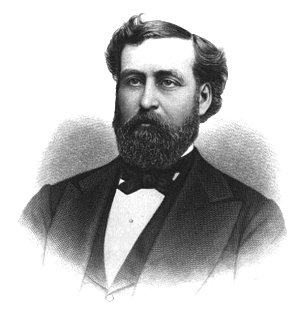 Philip Paul Bliss (9 July 1838 – 29 December 1876) was an American composer, conductor, writer of hymns and a bass-baritone Gospel singer. He wrote many well-known hymns, including “Almost Persuaded”; “Hallelujah, What a Saviour!”; “Let the Lower Lights Be Burning”; “Wonderful Words of Life”; and the tune for Horatio Spafford’s “It Is Well with My Soul.” Bliss’s house in Rome, Pennsylvania is now operated as the Philip P. Bliss Gospel Songwriters Museum.
Philip Paul Bliss (9 July 1838 – 29 December 1876) was an American composer, conductor, writer of hymns and a bass-baritone Gospel singer. He wrote many well-known hymns, including “Almost Persuaded”; “Hallelujah, What a Saviour!”; “Let the Lower Lights Be Burning”; “Wonderful Words of Life”; and the tune for Horatio Spafford’s “It Is Well with My Soul.” Bliss’s house in Rome, Pennsylvania is now operated as the Philip P. Bliss Gospel Songwriters Museum.
Bliss was born in Clearfield County, Pennsylvania in a log cabin. His father was Mr. Isaac Bliss, who taught the family to pray daily. Isaac loved music and allowed Philip to develop his passion for singing. His sister was Mary Elizabeth Willson, a gospel singer, singer, composer and evangelist.
When he was a boy, Bliss’s family moved to Kinsman, Ohio in 1844, and then returned to Pennsylvania in 1847, settling first in Espeyville, Crawford County, and a year later in Tioga County. Bliss had little formal education and was taught by his mother, from the Bible.
At age 10, while selling vegetables to help support the family, Bliss first heard a piano. At age 11, he left home to make his own living. He worked in timber camps and sawmills. While working, he irregularly went to school to further his education.
At 17, Bliss finished his requirements to teach. The next year, in 1856, he became a schoolmaster at Hartsville, New York, and during the summer he worked on a farm.
In 1857, Bliss met J. G. Towner, who taught singing. Towner recognized Bliss’s talent and gave him his first formal voice training. He also met William B. Bradbury, who persuaded him to become a music teacher. His first musical composition was sold for a flute. In 1858, he took up an appointment in Rome Academy, Pennsylvania.
In 1858, in Rome, Bliss met Lucy J. Young, whom he married on June 1, 1859. She came from a musical family and encouraged the development of his talent. She was a Presbyterian, and Bliss joined her Church.
At age 22, Bliss became an itinerant music teacher. On horseback, he went from community to community accompanied by a melodeon. Bliss’s wife’s grandmother lent Bliss $30 so he could attend the Normal Academy of Music of New York for six weeks. Bliss was now recognized as an expert within his local area. He continued the itinerant teaching. At this time he turned to composition. None of his songs were ever copyrighted.
In 1864, the Blisses moved to Chicago. Bliss was then 26. He became known as a singer and teacher. He wrote a number of Gospel songs. Bliss was paid $100 for a concert tour which lasted only a fortnight. He was amazed so much money could be earned so quickly. The following week, he was drafted for service in the Union Army. Because the war was almost over, his notice was cancelled after a few weeks. The unit he served with was the 149th Pennsylvania Infantry.
Following this, Bliss went on another concert tour, but this failed. He was, however, offered a position at Root and Cady Musical Publishers, at a salary of $150 per month. Bliss worked with this company from 1865 until 1873. He conducted musical conventions, singing schools and concerts for his employers. He continued to compose hymns, which were often printed in his employer’s books.
In 1869, Bliss formed an association with Dwight L. Moody. Moody and others urged him to give up his job and become a missionary singer. In 1874, Bliss decided he was called to full-time Christian evangelism. Bliss made significant amounts of money from royalties and gave them to charity and to support his evangelical endeavours.
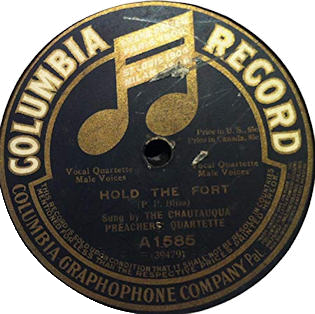 Bliss wrote the gospel song “Hold the Fort” after hearing Major Daniel Webster Whittle narrate an experience in the American Civil War.
Bliss wrote the gospel song “Hold the Fort” after hearing Major Daniel Webster Whittle narrate an experience in the American Civil War.
On 29 December 1876, the Pacific Express train on which Bliss and his wife were traveling in approached Ashtabula, Ohio. While the train was in the process of crossing a trestle bridge, which collapsed, all the carriages fell into the ravine below. Bliss escaped from the wreck, but the carriages caught fire and Bliss returned to try to extricate his wife. No trace of either body was discovered. Ninety-two of the 159 passengers are believed to have died in what became known as the Ashtabula River Railroad Disaster. A monument to Bliss was erected in Rome, Pennsylvania.
Found in his trunk, which somehow survived the crash and fire, was a manuscript bearing the lyrics of the only well-known Bliss Gospel song for which he did not write a tune: “I Will Sing of My Redeemer.” Soon thereafter, set to a tune specially written for it by James McGranahan, it became one of the first songs recorded by Thomas Alva Edison.
According to the Philip P. Bliss Gospel Songwriters Museum, the books of songs by Philip P. Bliss are as follows: The Charm (1871); The Song Tree, a collection of parlor and concert music (1872); The Sunshine for Sunday Schools (1873); The Joy for conventions and for church choir music (1873); and Gospel Songs for Gospel meetings and Sunday schools (1874). All of these books were copyrighted by John Church and Co.
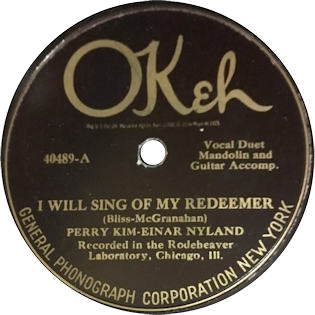 In addition to these publications, in 1875, Bliss compiled, and in connection with Ira D. Sankey, edited Gospel Hymns and Sacred Songs. In 1876, his last work was the preparation of the book known as Gospel Hymns No. 2, Sankey being associated with him as editor. These last two books are published by John Church and Co. and Biglow and Main jointly – the work of Mr. Bliss in them, under the copyright of John Church and Co.
In addition to these publications, in 1875, Bliss compiled, and in connection with Ira D. Sankey, edited Gospel Hymns and Sacred Songs. In 1876, his last work was the preparation of the book known as Gospel Hymns No. 2, Sankey being associated with him as editor. These last two books are published by John Church and Co. and Biglow and Main jointly – the work of Mr. Bliss in them, under the copyright of John Church and Co.
Many of his pieces appear in the books of George F. Root and Horatio R. Palmer, and many were published in sheet music form. A large number of his popular pieces were published in The Prize, a book of Sunday school songs edited by Root in 1870.
Survivors of the RMS Titanic disaster, including Dr. Washington Dodge, reported that passengers in lifeboats sang the Bliss hymn “Pull For The Shore”, some while rowing. During a May 11, 1912 luncheon talk at the Commonwealth Club in San Francisco, just a few weeks after his family and he survived the sinking of the ocean liner, Dodge recounted:
“Watching the vessel closely, it was seen from time to time that this submergence forward was increasing. No one in our boat, however, had any idea that the ship was in any danger of sinking. In spite of the intense cold, a cheerful atmosphere pervaded those present, and they indulged from time to time in jesting and even singing “Pull for (the) Shore …”
Source: Wikipedia
Further references:
– see also Wikipedia links
__________________________________________________________________
Edward Boatner
 Edward Hammond Boatner (1898–1981) was an African-American composer who wrote many popular concert arrangements of Negro spirituals.
Edward Hammond Boatner (1898–1981) was an African-American composer who wrote many popular concert arrangements of Negro spirituals.
Boatner was educated at Western University in Quindaro, Kansas, Boston Conservatory and received a Bachelor of Music from the Chicago Music College (Now the College of Performing Arts at Roosevelt University). He also studied music privately. He began as a Concert singer with the encouragement and assistance of Roland Hayes — who performed many of Boatner’s works on his concert programs—and choral director R. Nathaniel Dett. He also sang leading roles with the National Negro Opera Company. For the National Baptist Convention, he served as the director of music from 1925 to 1931. Boatner was a professor for Samuel Huston College (now Huston-Tillotson University) and Wiley College in Marshall, TX. He then settled in New York conducting a studio and directed community and church choirs. This allowed him to concentrate more on composing.
Boatner was the natural father of the great sax player Sonny Stitt, but the boy – named Edward Boatner, Jr. – was given up for adoption early on to the Stitt family, growing up in Saginaw, Michigan.
Source: Wikipedia
__________________________________________________________________
W. Herbert Brewster
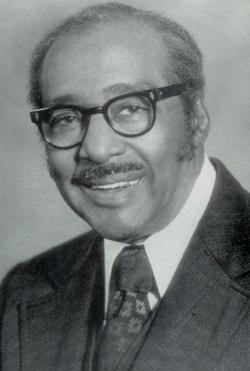 William Herbert Brewster (July 2, 1897 – October 14, 1987) was an influential African American Baptist minister, composer, dramatist, singer, poet and community leader.
William Herbert Brewster (July 2, 1897 – October 14, 1987) was an influential African American Baptist minister, composer, dramatist, singer, poet and community leader.
Brewster was born in Somerville, Tennessee. A 1922 graduate of Roger Williams College in Nashville, he settled in Memphis in the 1920s; he served as the pastor of the East Trigg Avenue Baptist Church in South Memphis from 1930 until his death in 1987. His lasting fame, however, is through his musical composition. Among his more than 200 published songs are the gospel standards “Move On Up A Little Higher” (Mahalia Jackson’s first hit in 1948) and “Surely, God Is Able” (a 1950 hit for The Ward Singers). These songs hold the distinction of being the first million-selling black gospel records. Other Brewster songs that were hits included “Lord I’ve Tried” (The Soul Stirrers), “I’ll Go” (Queen C. Anderson), “I’m Climbing Higher and Higher” (Marion Williams), and a favourite of African-American gospel choirs, “Let Us Go Back to the Old Landmark,” among many others.
Though there are several available recordings of Rev. Brewster’s gospel groups The Brewster Singers and The Brewsteraires, there are only two vocal recordings of Rev. Brewster himself. Both recordings credited to “Rev. W.H. Brewster And His Camp Meeting Of The Air” appeared on the Gotham single “Give Me That Old Time Religion”/”So Glad I’ve Got Good Religion”. Each song features a narration by Rev. Brewster followed by vocals.
Brewster was also the composer of more than fifteen gospel music dramas, including From Auction Block to Glory (1941) which was the first nationally-staged African American religious drama that featured gospel songs written specifically for the production. He was honoured by the Smithsonian Institution in 1982 for his music when it presented his musical drama Sowing in Tears, Reaping In Joy.
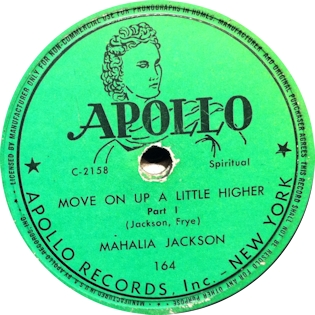 Apart from his vast legacy in the genre of black gospel music, Brewster also had a formative influence on a young Elvis Presley. Elvis occasionally attended services at East Trigg Avenue Baptist Church and listened to Brewster’s sermons which were broadcast on Sunday nights on the “Camp Meeting Of The Air” over Memphis radio station WHBQ. Dewey Phillips, radio host of WHBQ’s Red, Hot and Blue often interviewed Dr. Brewster who invited all listeners “black and white, to Sunday night services at East Trigg.” According to Presley biographer Peter Guralnick, “Dr. Brewster constantly preached on the theme that a better day was coming, one in which all men could walk as brothers, while across Memphis Sam Phillips listened on his radio every Sunday without fail.”
Apart from his vast legacy in the genre of black gospel music, Brewster also had a formative influence on a young Elvis Presley. Elvis occasionally attended services at East Trigg Avenue Baptist Church and listened to Brewster’s sermons which were broadcast on Sunday nights on the “Camp Meeting Of The Air” over Memphis radio station WHBQ. Dewey Phillips, radio host of WHBQ’s Red, Hot and Blue often interviewed Dr. Brewster who invited all listeners “black and white, to Sunday night services at East Trigg.” According to Presley biographer Peter Guralnick, “Dr. Brewster constantly preached on the theme that a better day was coming, one in which all men could walk as brothers, while across Memphis Sam Phillips listened on his radio every Sunday without fail.”
In February 2007, the Memphis City Schools named a new school in the Binghampton community in Brewster’s honor as the Dr. William Herbert Brewster Elementary School.
Dr. Brewster died, aged 90, in Memphis, Tennessee, where he is buried in the New Park Cemetery.
Source: Wikipedia
Further references: Memphis Music Hall of Fame – also see Wikipedia links
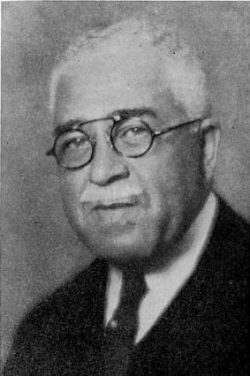 __________________________________________________________________
__________________________________________________________________
Harry Thacker Burleigh
Henry Thacker “Harry” Burleigh (December 2, 1866 – September 12, 1949), was an African-American classical composer, arranger, and professional singer known for his baritone voice. The first black composer instrumental in developing characteristically American music, Burleigh made black music available to classically trained artists both by introducing them to spirituals and by arranging them in a more classical form.
Source: Wikipedia
__________________________________________________________________
Lucie Campbell
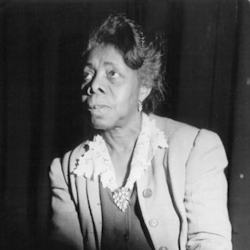 Lucie Eddie Campbell (Lucie Eddie Campbell-Williams) (April 30, 1885 – January 3, 1963) was an African American composer and singer of hymns, as well as an educator and advocate for social justice.
Lucie Eddie Campbell (Lucie Eddie Campbell-Williams) (April 30, 1885 – January 3, 1963) was an African American composer and singer of hymns, as well as an educator and advocate for social justice.
Lucie Eddie Campbell, the youngest of nine children, was born to Burrell and Isabella (Wilkerson) Campbell in Duck Hill, Mississippi. Burrell Campbell worked for the Mississippi Central Railroad (later purchased by the Illinois Central Railroad), and Isabella worked as a cook. Shortly after Lucie’s birth, Burrell Campbell was killed in a train accident. Being the sole provider for and caretaker of her nine children, Isabella moved to Memphis, Tennessee.
Isabella Campbell not only wanted her children to receive an education, she also wanted them exposed to the performing arts. She elected to give piano lessons to Lora, Lucie’s older sister. While piano lessons were being given to Lora, Lucie listened attentively and practiced the lessons on her own.
Campbell was educated in the public schools of Memphis. In 1899, she was graduated from Kortrecht High School (later Booker T. Washington) as valedictorian of her class and was awarded the highest prize for her Latin proficiency. After completing high school, She passed the teachers’ exam and began her teaching career at Ces Avenue Grammar School. In 1911, she was transferred to Kortrecht High School, where she taught American history and English. Later, she earned the baccalaureate degree from Rust College in Holy Springs, Mississippi, and the master’s degree from Tennessee Agricultural and Industrial State College.
At age nineteen, Campbell organized a group of Beale Street musicians into the Music Club. Other members later were added to form a thousand-voice choir that performed at the National Baptist Convention. At the organizational meeting of the National Sunday and Baptist Training Union Congress held in Memphis in 1915, “Miss Lucie” was elected as Music Director. She penned songs for the Congress and wrote musical pageants exhorting the young to give their lives to Christian service. In addition to writing religious music for the Congress, she also wrote the Congress’ study lessons, as well as other instructional materials.
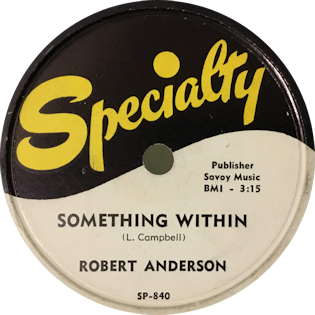 In 1919, Campbell published her first song, “Something Within” (the first gospel song published by a black American woman), which was followed by more than one hundred others, including “The Lord is My Shepherd”, “Heavenly Sunshine”, “The King’s Highway”, “Touch Me Lord Jesus”, “He Understands” and “He’ll Say Well Done”. The core of “He’ll Say Well Done”, written in 1933, was covered as “End of My Journey” by various artists over the decades, including The Rebels with Jim Hamill, Hank Snow, Johnny Cash, The Famous Davis Sisters of Philadelphia, Delores “Mom” Winans, Ferlin Husky, the duet of Donald Vails and Debbie Steele Hayden, and Ernest Tubb, among many others.
In 1919, Campbell published her first song, “Something Within” (the first gospel song published by a black American woman), which was followed by more than one hundred others, including “The Lord is My Shepherd”, “Heavenly Sunshine”, “The King’s Highway”, “Touch Me Lord Jesus”, “He Understands” and “He’ll Say Well Done”. The core of “He’ll Say Well Done”, written in 1933, was covered as “End of My Journey” by various artists over the decades, including The Rebels with Jim Hamill, Hank Snow, Johnny Cash, The Famous Davis Sisters of Philadelphia, Delores “Mom” Winans, Ferlin Husky, the duet of Donald Vails and Debbie Steele Hayden, and Ernest Tubb, among many others.
Campbell also introduced promising young musicians such as Marian Anderson and J. Robert Bradley to the world. “Miss Lucie” introduced Anderson to the National Baptist Convention and served as her accompanist. In 1955, Campbell’s loyalty and dedication to the Baptist Sunday School and Baptist Training Union Congress was recognized when she was named as one of the principal lecturers during the 50th Anniversary Session held in Atlantic City, New Jersey.
In 1946, she was named to the National Policy Planning Commission of the National Education Association. She was elected vice president of the American Teachers Association and from 1941 to 1946 she served as president of the Tennessee Teachers Association. She was also the music director of the National Baptist Convention’s Sunday School and the Union Congress of the Baptist Young People.
Campbell was an activist for civil justice. She defied the Jim Crow streetcar laws when she refused to relinquish her seat in the section reserved for whites, and as president of the Negro Education Association, she struggled with governmental officials to redress the inequities in the pay scale and other benefits for Negro teachers.
On January 14, 1960, Campbell married her lifelong companion, the Reverend C. R. Williams. The marriage ceremony took place in the home of Mr. and Mrs. Zack Brown in Memphis. As an expression of her love and respect for her friend, business partner, and companion, Campbell-Williams dedicated her song, “They That Wait Upon the Lord”, to her husband.
The National Sunday School and the Baptist Training Union Congress of the National Baptist Convention showed its appreciation to its “first lady of music” when it declared June 20, 1962, as Lucie E. Campbell Appreciation Day. While preparing to attend the celebration and banquet held in her honor, Campbell-Williams suddenly became gravely ill and was rushed to a hospital.
After a six-month bout with illness, Campbell-Williams died on January 3, 1963, in Nashville. Her body was conveyed to Memphis and funeral services were held on January 7 at the Mount Nebo Baptist Church by pastor Dr. Roy Love. She was interred in the Mount Carmel Cemetery.
Source: Wikipedia
Further References – Memphis Music Hall of Fame
See also Wikipedia links
__________________________________________________________________
Fanny Crosby
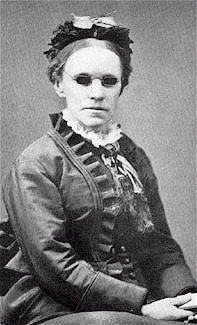 Frances Jane van Alstyne (née Crosby; March 24, 1820 – February 12, 1915), more commonly known as Fanny Crosby, was an American mission worker, poet, lyricist, and composer. She was one of the most prolific hymnists in history, writing more than 8,000 hymns and gospel songs, with more than 100 million copies printed, despite being blind from shortly after birth. She is also known for her teaching and her rescue mission work. By the end of the 19th century, she was a household name.
Frances Jane van Alstyne (née Crosby; March 24, 1820 – February 12, 1915), more commonly known as Fanny Crosby, was an American mission worker, poet, lyricist, and composer. She was one of the most prolific hymnists in history, writing more than 8,000 hymns and gospel songs, with more than 100 million copies printed, despite being blind from shortly after birth. She is also known for her teaching and her rescue mission work. By the end of the 19th century, she was a household name.
Crosby was known as the “Queen of Gospel Song Writers” and as the “Mother of modern congregational singing in America”, with most American hymnals containing her work. Her gospel songs were “paradigmatic of all revival music”, and Ira Sankey attributed the success of the Moody and Sankey evangelical campaigns largely to Crosby’s hymns. Some of Crosby’s best-known songs include “Pass Me Not, O Gentle Saviour”, “Blessed Assurance”, “Jesus Is Tenderly Calling You Home”, “Praise Him, Praise Him”, “Rescue the Perishing”, and “To God Be the Glory”. Some publishers were hesitant to have so many hymns by one person in their hymnals, so Crosby used nearly 200 different pseudonyms during her career.
Crosby also wrote more than 1,000 secular poems and had four books of poetry published, as well as two best-selling autobiographies. Additionally, she co-wrote popular secular songs, as well as political and patriotic songs and at least five cantatas on biblical and patriotic themes, including The Flower Queen, the first secular cantata by an American composer. She was committed to Christian rescue missions and was known for her public speaking.
Source: Wikipedia (extract)
Further references :
– also see Wikipedia links
__________________________________________________________________
William Levi Dawson
 William Levi Dawson (September 26, 1899 – May 2, 1990) was an African-American composer, choir director, professor, and musical figure.
William Levi Dawson (September 26, 1899 – May 2, 1990) was an African-American composer, choir director, professor, and musical figure.
Dawson was born in Anniston, AL. A graduate of the Horner Institute of Fine Arts with a Bachelor of Music, William Dawson later studied at the Chicago Musical College with professor Felix Borowski, and then at the American Conservatory of Music where he received his master’s degree. Early in his career he served as a trombonist both with the Redpath Chautauqua and the Civic Orchestra of Chicago (1927–1930). His teaching career began in the Kansas City public school system, followed by a tenure with the Tuskegee Institute from 1931–1956. During this period, he appointed a large number of faculty members who later became well known for their work in the field. Additionally, Dawson also developed the Tuskegee Institute Choir into an internationally renowned ensemble; they were invited to sing at New York City’s Radio City Music Hall in 1932 for a week of six daily performances.
Dawson began composing at a young age, and early in his compositional career his Trio for Violin, Cello and Piano was performed by the Kansas City Symphony Orchestra. Besides chamber music, he is also known for his contributions to both orchestral and choral literature. His best known works are arrangements of and variations on spirituals. His Negro Folk Symphony of 1934 garnered a great deal of attention at its world premiere by Leopold Stokowski and the Philadelphia Orchestra. The symphony was revised in 1952 with added African rhythms inspired by the composer’s trip to West Africa. Dawson said that the composition was an attempt to convey the missing elements that were lost when Africans came into bondage outside their homeland. His most popular spirituals include “Ezekiel Saw the Wheel”, “Jesus Walked the Lonesome Valley”, “Talk about a Child That Do Love Jesus” and “King Jesus Is a-Listening”. Dawson was elected to the Alpha Alpha chapter of Phi Mu Alpha Sinfonia, the music fraternity in 1977. He died, aged 90, in Montgomery, Alabama.
Dawson’s arrangements of traditional African-American spirituals are widely published in the United States and are regularly performed by school, college and community choral programs. According to Dominique-Rene de Lerma of Lawrence University, in notes to “The Spirituals of William L. Dawson” produced by The St Olaf Choir in 1997, “What is even more striking than the richness of Dawson’s textures is the lushness of his sonorities, exhibiting his remarkable insight into vocal potentials.”
Source: Wikipedia
__________________________________________________________________
Robert Nathaniel Dett
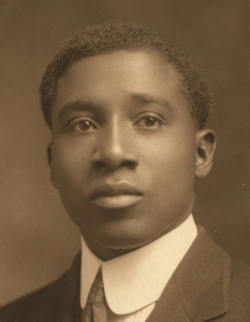 Robert Nathaniel Dett (October 11, 1882 – October 2, 1943), often known as R. Nathaniel Dett and Nathaniel Dett, was a Canadian-American Black composer, organist, pianist, choral director, and music professor. Born and raised in Canada until the age of 11, he moved to the United States with his family and had most of his professional education and career there. During his lifetime he was a leading Black composer, known for his use of African-American folk songs and spirituals as the basis for choral and piano compositions in the 19th century Romantic style of Classical music.
Robert Nathaniel Dett (October 11, 1882 – October 2, 1943), often known as R. Nathaniel Dett and Nathaniel Dett, was a Canadian-American Black composer, organist, pianist, choral director, and music professor. Born and raised in Canada until the age of 11, he moved to the United States with his family and had most of his professional education and career there. During his lifetime he was a leading Black composer, known for his use of African-American folk songs and spirituals as the basis for choral and piano compositions in the 19th century Romantic style of Classical music.
He was among the first Black composers during the early years after the American Society of Composers, Authors and Publishers (ASCAP) was organized. His works often appeared among the programs of Will Marion Cook’s New York Syncopated Orchestra. Dett performed at Carnegie Hall and at the Boston Symphony Hall as a pianist and choir director.
Source: Wikipedia
__________________________________________________________________
Thomas Andrew Dorsey
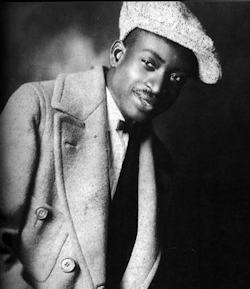 Thomas Andrew Dorsey (July 1, 1899 – January 23, 1993) was an American musician. Dorsey was known as “the father of black gospel music” and was at one time so closely associated with the field that songs written in the new style were sometimes known as “dorseys”. Dorsey was the music director at Pilgrim Baptist Church in Chicago, Illinois, from 1932 until the late–1970s.
Thomas Andrew Dorsey (July 1, 1899 – January 23, 1993) was an American musician. Dorsey was known as “the father of black gospel music” and was at one time so closely associated with the field that songs written in the new style were sometimes known as “dorseys”. Dorsey was the music director at Pilgrim Baptist Church in Chicago, Illinois, from 1932 until the late–1970s.
Dorsey’s best-known composition, “Take My Hand, Precious Lord”, was performed by Mahalia Jackson and was a favorite of the Rev. Martin Luther King Jr. Another composition, “Peace in the Valley”, was a hit for Red Foley in 1951 and has been performed by dozens of other artists, including Albertina Walker (the “Queen of Gospel”), Elvis Presley and Johnny Cash. The Library of Congress added his album Precious Lord: New Recordings of the Great Songs of Thomas A. Dorsey (1973) to the United States National Recording Registry in 2002.
Dorsey was born in Villa Rica, Georgia. Earlier in his life he was a leading blues pianist known as Georgia Tom. As formulated by Dorsey, gospel music combines Christian praise with the rhythms of jazz and the blues. His conception also deviates from what had been, to that time, standard hymnal practice by referring explicitly to the self and its relation to faith and God, rather than the individual subsumed into the group by belief. Dorsey’s father was a minister and his mother a piano teacher. He learned to play blues piano as a young man. After studying music formally in Chicago, he became an agent for Paramount Records. In 1924, he put together a band for Ma Rainey called the Wild Cats Jazz Band. He started out playing at rent parties under the names Barrelhouse Tom and Texas Tommy, but was also best known as Georgia Tom. For a short time around 1926, he accompanied the Pace Jubilee Singers.
As Georgia Tom, he teamed up with Tampa Red (Hudson Whittaker), with whom he recorded the raunchy 1928 ragtime hit record “It’s Tight Like That”, a sensation, eventually selling seven million copies. In all, he is credited with more than 400 blues and jazz songs. Dorsey began recording gospel music along with blues in the mid-1920s. These recordings led to his performance at the National Baptist Convention in 1930, and he became the bandleader of two churches in the early 1930s. In his grief after the death of his wife Nettie in 1932, Dorsey wrote his most famous song, one of the most famous of all gospel songs, “Precious Lord, Take My Hand.” Unhappy with the treatment received at the hands of established publishers, Dorsey founded the first black gospel music publishing company, Dorsey House of Music. He also founded a gospel choir and was a founder and the first president of the National Convention of Gospel Choirs and Choruses.
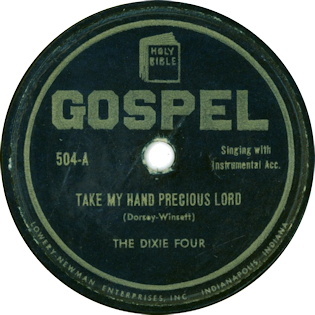 Dorsey influenced not only African-American music but also music by white artists. “Precious Lord” was recorded by Albertina Walker, Elvis Presley, Mahalia Jackson, Aretha Franklin, B. B. King, Clara Ward, Dorothy Norwood, Jim Reeves, Roy Rogers, Tennessee Ernie Ford, and Johnny Cash, among many others. It was a favorite gospel song of the Rev. Martin Luther King, Jr., and was sung at the rally held at Mason Temple the night before his assassination. By his request, it was sung at his funeral by Mahalia Jackson. It was a favorite of President Lyndon B. Johnson, who also requested that it be sung at his funeral. Dorsey was also a great influence on other Chicago-based gospel artists, such as Albertina Walker and the Caravans and Little Joey McClork. Dorsey wrote “Peace in the Valley” for Mahalia Jackson in 1937, which also became a gospel standard.
Dorsey influenced not only African-American music but also music by white artists. “Precious Lord” was recorded by Albertina Walker, Elvis Presley, Mahalia Jackson, Aretha Franklin, B. B. King, Clara Ward, Dorothy Norwood, Jim Reeves, Roy Rogers, Tennessee Ernie Ford, and Johnny Cash, among many others. It was a favorite gospel song of the Rev. Martin Luther King, Jr., and was sung at the rally held at Mason Temple the night before his assassination. By his request, it was sung at his funeral by Mahalia Jackson. It was a favorite of President Lyndon B. Johnson, who also requested that it be sung at his funeral. Dorsey was also a great influence on other Chicago-based gospel artists, such as Albertina Walker and the Caravans and Little Joey McClork. Dorsey wrote “Peace in the Valley” for Mahalia Jackson in 1937, which also became a gospel standard.
Elvis Presley’s rendition of “Peace in the Valley” as delivered on his third appearance on The Ed Sullivan Show, on January 6, 1957, was seen by approximately 50 million television viewers. That night, Presley launched a live emergency appeal to lessen the plight of some 250,000 Hungarian refugees fleeing the recent invasion of their country by the Soviet Union, and dedicated the song to them, those watching sent within the next 11 months, some US$6 million, the equivalent of US$49.5 million in 2017 dollars, the recipient being the International Red Cross in Geneva, which distributed the perishable and nonperishable articles purchased with these funds to the refugees in England and Austria, where they settled for life.
Dorsey was a member of the Omega Psi Phi fraternity. Dorsey’s niece is Lena McLin, Gospel singer and Chicago-area music teacher. In 1925, Dorsey married his first wife, Nettie Harper. Harper, who had been Ma Rainey’s wardrobe mistress, died during childbirth in 1932. Two days later the child, a son, also died. Dorsey died on January 23, 1993 in Chicago, Illinois at age 93. He was interred there in the Oak Woods Cemetery.
Dorsey was inducted into the Gospel Music Hall of Fame in 1982. Dorsey was the first African American elected to the Nashville Songwriters Hall of Fame and also the first in the Gospel Music Association’s Living Hall of Fame.
In 2007, he was inducted as a charter member of the Gennett Records Walk of Fame, in Richmond, Indiana. His papers are preserved at Fisk University. Dorsey’s works have proliferated beyond performance, into the hymnals of virtually all American churches and of English-speaking churches worldwide.
Source: Wikipedia
__________________________________________________________________
Charles H. Gabriel
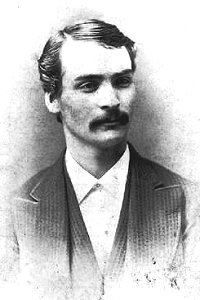 Charles Hutchinson Gabriel (August 18, 1856 – September 14, 1932) was a writer of gospel songs and composer of gospel tunes. He is said to have written and/or composed between 7,000 and 8,000 songs, many of which are available in 21st century hymnals. He used several pseudonyms, including Charlotte G. Homer, H. A. Henry, and S. B. Jackson.
Charles Hutchinson Gabriel (August 18, 1856 – September 14, 1932) was a writer of gospel songs and composer of gospel tunes. He is said to have written and/or composed between 7,000 and 8,000 songs, many of which are available in 21st century hymnals. He used several pseudonyms, including Charlotte G. Homer, H. A. Henry, and S. B. Jackson.
Charles Hutchinson Gabriel was born in Wilton, Muscatine County, Iowa, and raised on a farm. His father led singing schools in their home, and young Charles developed an interest in music. It is said that he taught himself to play the family’s reed organ. Even though he never had any formal training in music, he began to travel and lead his own shape note singing schools in various locations around the age of 17.
His musical talent was well recognized in his boyhood home of Wilton. There is one folklore story, that the pastor of the First Presbyterian Church of Wilton (Pastor Pollock or McAulay) once saw Gabriel walking in town early in the week. He asked Gabriel if he knew a good song to go along with his sermon. The pastor shared the sermon topic and by the end of the week the boy had written a song for that Sunday, words and music. The Rev. N. A. McAulay was a pastor at the Wilton church for many years, and it is also said that young Gabriel wrote the music for one of McAulay’s songs. The song, “How Could it Be,” was later published in Songs for Service, edited by Gabriel, with the music being credited to “Charles H. Marsh,” possibly one of Gabriel’s pseudonyms.
Eventually he served as music director at Grace Methodist Episcopal Church, San Francisco, California (1890-2). While working at Grace Church, he was asked to write a song for a mission celebration. He wrote “Send the Light,” which became his first commercial song. He moved to Chicago, Illinois, and in 1912 he began working with Homer Rodeheaver’s publishing company.
 Gabriel was married twice, first to Fannie Woodhouse, which ended in divorce, and later to Amelia Moore. One child was born to each marriage. He died in Hollywood, California. Gabriel wrote an autobiography titled Sixty Years of Gospel Song (Chicago, Illinois: Hope Publishing Company, undated). He was inducted into the Gospel Music Hall of Fame in 1982.
Gabriel was married twice, first to Fannie Woodhouse, which ended in divorce, and later to Amelia Moore. One child was born to each marriage. He died in Hollywood, California. Gabriel wrote an autobiography titled Sixty Years of Gospel Song (Chicago, Illinois: Hope Publishing Company, undated). He was inducted into the Gospel Music Hall of Fame in 1982.
Gabriel edited 35 gospel song books, 8 Sunday school song books, seven books for male choruses, six books for ladies, ten children’s song books, nineteen collections of anthems, 23 choir cantatas, 41 Christmas cantatas, 10 children’s cantatas, and books on musical instruction.
Among these publications are: Gospel Songs and Their Writers (Chicago, Illinois: The Rodeheaver Company, 1915) The Singers and Their Songs (Chicago, Illinois: The Rodeheaver Company, 1916) Church Music of Yesterday, To-Day and for To-Morrow (Chicago, Illinois: The Rodeheaver Company, 1921) Golden Bells (Chicago, Illinois: The Rodeheaver Company, 1923) (music editor) His “Dream of Fairyland” was an exceedingly successful children’s cantata, and sold well for several years. He considered his best work to be a sacred cantata for adult voices: “Saul, King of Israel.”[9] He also had an interest in military bands, and wrote marches, waltzes, etc., for bands.
Source: Wikipedia
Further Refrences – see Wikipedia links
__________________________________________________________________
Moses George Hogan
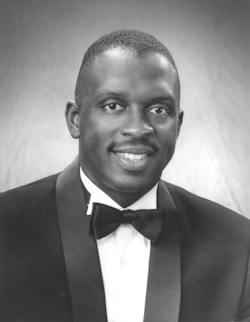 Moses George Hogan (March 13, 1957 – February 11, 2003) was an American composer and arranger of choral music. He was best known for his settings of spirituals. Hogan was a pianist, conductor, and arranger of international renown. His works are celebrated and performed by high school, college, church, community, and professional choirs today. His most famous work today is The Oxford Book of Spirituals created in 2002.
Moses George Hogan (March 13, 1957 – February 11, 2003) was an American composer and arranger of choral music. He was best known for his settings of spirituals. Hogan was a pianist, conductor, and arranger of international renown. His works are celebrated and performed by high school, college, church, community, and professional choirs today. His most famous work today is The Oxford Book of Spirituals created in 2002.
Born in New Orleans, Hogan lived with five siblings and his parents, who gave their children a passion for music. He was an accomplished pianist by the age of nine.[1] The family attended the A.L. Davis New Zion Baptist Church. Hogan’s father was a bass singer in the church choir while Hogan’s uncle, Edwin B. Hogan, was the Minister of Music and organist.
Hogan was musically educated from a young age, first enrolling in Xavier University Junior School of Music. In his sophomore year of high school, he was accepted to New Orleans Center for Creative Arts High School and was in its first graduating class of 1975.
Hogan was awarded a full scholarship to the Oberlin Conservatory of Music, where he studied piano and graduated in 1979 with a Bachelor of Music degree. Immediately after graduation, he began graduate studies at the Juilliard School of Music, and later went to study classical music in Vienna. During his piano performance years, Hogan won several competitions including first place at the 28th Annual Kosciuszko Foundation Chopin Competition in New York. He returned to Louisiana State University where he was offered the opportunity to work for his doctorate, but decided not to pursue it.
He died at the age of 45 of a brain tumor, and his surviving relatives include his mother, brother, and four sisters. He was interred at Mount Olivet Cemetery and Mausoleum, New Orleans, Orleans Parish, Louisiana.
Source: Wikipedia
__________________________________________________________________
Francis Hall Johnson
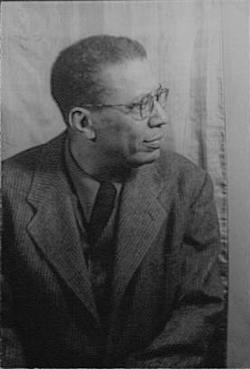 Francis Hall Johnson (March 12, 1888 – April 30, 1970) was an American composer and arranger of African-American spiritual music. He is one of a group—including Harry T. Burleigh, R. Nathaniel Dett, and Eva Jessye—who elevated the African-American spiritual to an art form, comparable in its musical sophistication to the compositions of European Classical composers.
Francis Hall Johnson (March 12, 1888 – April 30, 1970) was an American composer and arranger of African-American spiritual music. He is one of a group—including Harry T. Burleigh, R. Nathaniel Dett, and Eva Jessye—who elevated the African-American spiritual to an art form, comparable in its musical sophistication to the compositions of European Classical composers.
Francis Hall Johnson was born on March 12, 1888, the fourth of six children of Alice Virginia Sansom and William Decker Johnson] who was a bishop in the AME Church. Johnson received an extensive education. He attended the private, all-black Knox Institute and earned a degree from Allen University in Columbia, South Carolina. He also attended Atlanta University, the Juilliard School, Hahn School of Music, and the University of Pennsylvania.
As a boy, Johnson was tutored on piano by his older sister, and he taught himself to play the violin after hearing a violin recital given by Joseph Henry Douglass, grandson of Frederick Douglass.
Johnson’s debut as a professional violinist occurred in a concert in New York in 1910. He went on to play the violin and viola professionally, including in the orchestra for the 1921 musical, Shuffle Along. Johnson played in the orchestra led by James Reese Europe as it accompanied Vernon and Irene Castle on tour, and he played with the New York Syncopated Orchestra, led by Will Marion Cook in 1918. In time, however, he became more interested in choral music, forming the Hall Johnson Negro Choir, the first of many choral ensembles, in 1925. The group first performed professionally at the Pythian Temple in 1928. Johnson and his choir became renowned through their participation in the 1930 Broadway production of Marc Connelly’s The Green Pastures as well as in national and international tours of the play, radio versions, the 1936 film adaptation, and Hallmark Hall of Fame television broadcasts.
Johnson would also go on to arrange music for and conduct his choir in more than thirty feature-length Hollywood films, besides a number of short films and cartoons. Johnson wrote Run, Little Chillun, which premiered on Broadway in 1933 and was produced in Los Angeles in 1935 – 1937 under the auspices of the Federal Theater Project. Another production of the folk opera was featured in San Francisco in 1939 as an exhibit of the Works Progress Administration at the Golden Gate International Exposition. Also in 1937, the Hall Johnson Choir was featured in the soundtracks of the Frank Capra film, Lost Horizon , Walt Disney’s Snow White and the Seven Dwarfs and Hal Roach’s Zenobia. In 1941 they returned for yet another Disney film, Dumbo, specifically for the song “When I See An Elephant Fly”; Johnson himself voiced one of the crow characters, the Preacher Crow. Some members of the choir also provided voices to these characters as well except Cliff Edwards, who voiced the lead Jim Crow.
In addition to his theatrical work, Johnson wrote the Easter cantata Son of Man, which premiered at New York’s City Center in 1946, the same year that the Hall Johnson Choir sang in Disney’s Song of the South. In 1951, the Hall Johnson Choir was selected by the United States Department of State to represent the United States at the International Festival of Fine Arts held in Berlin, Germany.
Johnson wrote of the spiritual:
“True enough, this music was transmitted to us through humble channels, but its source is that of all great art everywhere—the unquenchable, divinely human longing for a perfect realization of life. It traverses every shade of emotion without spilling over in any direction. Its most tragic utterances are without pessimism, and its lightest, brightest moments have nothing to do with frivolity. In its darkest expressions there is always a hope, and in its gayest measures a constant reminder. Born out of the heart-cries of a captive people who still did not forget how to laugh, this music covers an amazing range of mood. Nevertheless, it is always serious music and should be performed seriously, in the spirit of its original conception”.
Johnson was fluent in both German and French. Among the singers he coached were Marian Anderson, Robert McFerrin and Shirley Verrett. His arrangements of the spirituals have been recorded by some of the world’s finest artists. Johnson, aged 82, died during a fire at his New York apartment on April 30, 1970.
Source: Wikipedia
__________________________________________________________________
John Rosamond Johnson
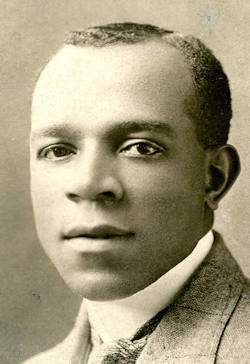 John Rosamond Johnson (August 11, 1873 – November 11, 1954), most often referred to as J. Rosamond Johnson, was an American composer and singer during the Harlem Renaissance. Born in Jacksonville, Florida, he had much of his career in New York City. Johnson is most notable as the composer of the hymn “Lift Every Voice and Sing”, which has come to be known in the United States as the “Negro National Anthem”. It was first performed live by 500 Black American students from the segregated Stanton School (elementary/middle/junior high-level), Jacksonville, Florida, in 1900. The song was published by Joseph W. Stern & Co., Manhattan, New York (later the Edward B. Marks Music Company).
John Rosamond Johnson (August 11, 1873 – November 11, 1954), most often referred to as J. Rosamond Johnson, was an American composer and singer during the Harlem Renaissance. Born in Jacksonville, Florida, he had much of his career in New York City. Johnson is most notable as the composer of the hymn “Lift Every Voice and Sing”, which has come to be known in the United States as the “Negro National Anthem”. It was first performed live by 500 Black American students from the segregated Stanton School (elementary/middle/junior high-level), Jacksonville, Florida, in 1900. The song was published by Joseph W. Stern & Co., Manhattan, New York (later the Edward B. Marks Music Company).
J. Rosamond Johnson was the younger brother of poet and activist James Weldon Johnson. James Weldon Johnson wrote the lyrics for “Lift Every Voice and Sing”. The two also worked together in causes related to the NAACP. He was born on August 11, 1873, the son of Helen Louise Dillet, a native of Nassau, Bahamas, and James Johnson. His maternal great-grandmother, Hester Argo, had escaped from Saint-Domingue (now Haiti) during the revolutionary upheaval in 1802, along with her three young children, including (Johnson’s grandfather Stephen Dillet (1797–1880). Although originally headed to Cuba, their boat was intercepted by privateers and they were brought to Nassau, Bahamas instead. There they permanently settled. In 1833 Stephen Dillet was the first man of color to win election to the Bahamian legislature (ref. Along This Way, James Weldon Johnson’s autobiography).
Johnson was trained at the New England Conservatory and then studied in London. His career began as a public school teacher in his hometown of Jacksonville, Florida. Traveling to New York, he began his show business career along with his brother and composer Bob Cole. As a songwriting team, they wrote works such as The Evolution of Ragtime (1903). Among the earliest works by the group was a suite of six songs of “Negro” music. The men also produced two successful Broadway operettas with casts of black actors: Shoo-Fly Regiment of 1906 and The Red Moon of 1908.
Johnson also performed in these operettas. He played a Tuskegee soldier who enlists in the Spanish–American War in The Shoo Fly Regiment and portrayed African-American Plunk Green opposite Abbie Mitchell’s Minnehaha, a mixed Indian/black woman, in The Red Moon. These performances went beyond theatre. Rosamond, alongside his brother and Cole, evoked a political presence in their inclusion of other races in their musicals. In The Red Moon, Cole and Johnson broke racial lines as they included a love scene between Rosamond’s Green and Mitchell’s Minnehaha. This spotlight on Native Americans was so well received that Rosamond was inducted as a ‘sub-chief’ into the Iroquois tribe of Montreal’s Caughnawaga Reservation, which had a majority population of ethnic Mohawk people. Cole and the Johnson brothers also created and produced several “white” musicals: Sleeping Beauty and the Beast in 1901, In Newport in 1904, and Humpty Dumpty in 1904. Johnson would also collaborate to create Hello Paris with J. Leubrie Hill in 1911.
Johnson was active in various musical roles during his career. He toured the vaudeville circuit and, after Cole’s 1911 death, began a successful tour with Charles Hart and Tom Brown. In London, he wrote music for a theater review from 1912 to 1913 serving a long residency. After returning to the United States, New York’s Music School Settlement for Colored — founded by the New York Symphony Orchestra’s David Mannes — appointed him as director where he served from 1914 to 1919.
J. Rosamond Johson served as the first Deputy Marshal for the historic Negro Silent Protest Parade in 1917. Johnson also toured with his own ensembles, The Harlem Rounders and The Inimitable Five. He also performed in Negro spiritual concerts with Emmanuel Taylor Gordon, including at Aeolian Hall in Manhattan.
The London production of Lew Leslie’s Blackbirds of 1936 engaged Johnson as musical director. During the 1930s, Johnson also sang the role of Frazier in the original production of Gershwin’s Porgy and Bess, taking roles in other dramas as well. He reprised his role as Frazier on the 1951 studio recording of Porgy and Bess.
As an editor, he collected four important works of traditional African-American songs. The first two of these song collections he compiled along with his brother James: The Book of American Negro Spirituals (1925) and The Second Book of Negro Spirituals (1926). In addition, Johnson edited Shoutsongs (1936) and the folksong anthology Rolling Along in Song (1937). He died on November 11, 1954. His widow, Nora E. Floyd Johnson, died in 1969.
Source: Wikipedia
__________________________________________________________________
Roberta Martin
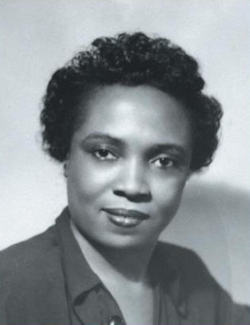 Roberta Evelyn Martin (February 12, 1907 – January 18, 1969) was an American gospel composer, singer, pianist, arranger and choral organizer, helped launch the careers of many other gospel artists through her group, The Roberta Martin Singers.
Roberta Evelyn Martin (February 12, 1907 – January 18, 1969) was an American gospel composer, singer, pianist, arranger and choral organizer, helped launch the careers of many other gospel artists through her group, The Roberta Martin Singers.
Born in Helena, Arkansas on February 12, 1907, Martin moved to Chicago with her family in 1917, where she studied piano. Although a high school teacher inspired her to dream of becoming a concert pianist, her future course was changed after accompanying the Young People’s Choir at Ebenezer Baptist Church. She came into contact with Thomas A. Dorsey, known as the Father of Gospel Music, through her work as the pianist for the youth choir. With Dorsey’s help, she and Theodore Frye organized the Martin-Frye Quartet, a youth group consisting of Eugene Smith, Norsalus McKissick, Robert Anderson, James Lawrence, Willie Webb and Romance Watson, in 1933. Martin renamed the group the Roberta Martin Singers in 1936 and added Bessie Folk, Myrtle Scott and Delois Barrett Campbell to the group in the 1940s. The group set the standard for the gospel choir and mixed group, and had an extremely successful recording career, featuring such hits as “Only A Look,” and “Grace.” Most of these songs were published by Roberta Martin Studio of Music, a publishing house in Chicago that she incorporated in 1939, and would eventually publish outstanding compositions by gospel artists ranging from Professor Alex Bradford to James Cleveland. Her first composition, “Try Jesus, He Satisfies,” was an immediate hit in 1943. She was also the choir director of the Pisgah Baptist Church in Chicago for many years.
 The theme song of the Roberta Martin Singers is “Only A Look.” It was always sung at the opening of their concerts, at their annual Anniversary Program in Chicago, and was recorded on the Apollo label with Bessie Folk with Delois Barrett as lead soloists and later on the Savoy label with Delois Barrett as lead vocalist. Martin’s group was unique in a number of ways. It was the first to include both male and female voices in a small group format. Martin favored smooth harmonies and a subtle rhythmic dynamic in which her singers were slightly, almost imperceptibly, behind the beat. On slower songs Martin featured lead singers against a subdued background provided by the rest of the group; on jubilee and shout material she used the more energetic call-and-response technique typical of Holiness churches. Martin encouraged her singers to maintain their individual personalities, allowing the audience to distinguish each backup singer’s voice rather than blending them into a single choral sound.
The theme song of the Roberta Martin Singers is “Only A Look.” It was always sung at the opening of their concerts, at their annual Anniversary Program in Chicago, and was recorded on the Apollo label with Bessie Folk with Delois Barrett as lead soloists and later on the Savoy label with Delois Barrett as lead vocalist. Martin’s group was unique in a number of ways. It was the first to include both male and female voices in a small group format. Martin favored smooth harmonies and a subtle rhythmic dynamic in which her singers were slightly, almost imperceptibly, behind the beat. On slower songs Martin featured lead singers against a subdued background provided by the rest of the group; on jubilee and shout material she used the more energetic call-and-response technique typical of Holiness churches. Martin encouraged her singers to maintain their individual personalities, allowing the audience to distinguish each backup singer’s voice rather than blending them into a single choral sound.
Martin complemented her group’s performance with her piano accompaniment, which often dictated the rhythm and pace of the song or commented on it by responding to or accenting a singer’s performance. Martin’s piano style reflected the influence of Holiness artists such as Arizona Dranes and her classical training.
The other musical signature of the Roberta Martin Singers was the accompaniment of “Little” Lucy Smith on the Hammond organ. Her droning introductory chord and unique “passes” using the bass pedals set the tone for a meditative experience and became a recognized trademark of a “Roberta Martin gospel song”.
Martin’s refined, subdued style, which emphasized phrasing and modulation, had a profound influence on many gospel artists, including Albertina Walker, James Cleveland and Alex Bradford. Cleveland and Bradford wrote and arranged for and performed with her group early in their careers. Her stylistic restraint did not, on the other hand, mean that her group lacked fervor or emotional punch; as one commentator noted, “Bert would sneak up on you and hurt you.”
Roberta briefly retired from music in the 60’s due in part to her battle with cancer, but came back to record her final album Praise God (from whom all blessings flow), and her vocal recording, “I Have Hope”, which was written by her good friend Jessie Jimerson (aka Jessie Jimerson-Phillips.) Her group disbanded upon her death in 1969, but the surviving members continued to perform as a group in reunion concerts into the 21st century. Many of the members later had solo careers, such as Delois Barrett and Gloria Griffin, who was the composer of the classic gospel song “God Specializes”, made famous by the Roberta Martin Singers in concerts and recordings.
Roberta Martin died of cancer on January 18, 1969 at the age of 61. Well-known and very popular in the African-American community, her funeral in Chicago attracted over 50,000 mourners.
She composed about seventy songs, arranged and published 280 gospel songs, and reached and inspired thousands of listeners selling sheet music. Her compositions include “He Knows Just How Much We Can Bear,” and “God Is Still on the Throne” (1959), “Let It Be” (1950), and “Just Jesus and Me” (1966). Martin earned six Gold records and the Roberta Martin Singers sang at Gian-Carlo Menotti’s Spoleto Festival of Two Worlds in Spoleto, Italy, in 1963. Her great contribution to the history of gospel music was her development of a distinctive gospel-piano style and the special sound of her group, which integrated for the first time men and women into the gospel chorus during the mid-40s when she brought female voices into her all-male group, which she accompanied on piano.
On July 15, 1998, the United States Postal Service issued a 32 cent commemorative stamp honoring Martin’s influence. The stamp was one of four honoring gospel women. The other women honored were Mahalia Jackson, Clara Ward, and Sister Rosetta Tharpe.
Source: Wikipedia
__________________________________________________________________
Kenneth Morris
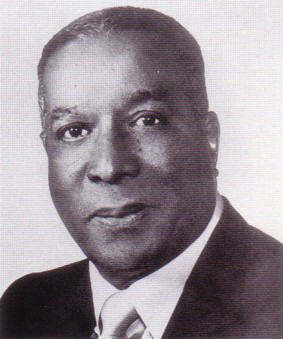 Kenneth Morris (August 28, 1917 – February 1, 1989) was an African American composer of gospel music and publisher who popularized several songs, including “Just a Closer Walk with Thee”.
Kenneth Morris (August 28, 1917 – February 1, 1989) was an African American composer of gospel music and publisher who popularized several songs, including “Just a Closer Walk with Thee”.
Morris was born in New York in 1917 and performed in church as a youth before becoming a professional jazz musician. He studied at the Manhattan Conservatory of Music and founded a band which performed at the Chicago World’s Fair in 1934. He became ill while in Chicago and decided to permanently relocate there. In Chicago he was introduced to several prominent members of the gospel community, including Charles Henry Pace and Lillian Bowles. Morris eventually became one of the first musicians to introduce the Hammond organ to gospel music.
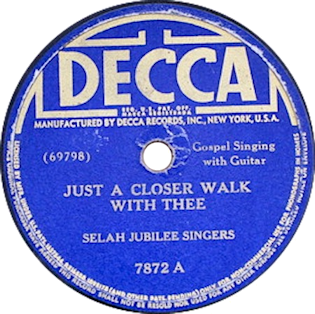 Morris met Sallie Martin (1896-1988), a Georgia native, in the choir at First Church of Deliverance in Chicago where she was the choir director and they co-founded Martin and Morris Music Company, the nation’s oldest continuously running black gospel music publishing company, which operated from 1940 until the 1980s. In 1940 Morris arranged and published for the first time the well-known version of “Just a Closer Walk With Thee” after gospel musicians Robert Anderson and RL Knowles listened to William B. Hurse sing it in Kansas City and brought it to Morris’ attention. Morris added some new lyrics and a choral arrangement. Morris bought out Martin in the 1973. Morris died in 1988, and his widow Necie ran the business for a short period after his death before closing.
Morris met Sallie Martin (1896-1988), a Georgia native, in the choir at First Church of Deliverance in Chicago where she was the choir director and they co-founded Martin and Morris Music Company, the nation’s oldest continuously running black gospel music publishing company, which operated from 1940 until the 1980s. In 1940 Morris arranged and published for the first time the well-known version of “Just a Closer Walk With Thee” after gospel musicians Robert Anderson and RL Knowles listened to William B. Hurse sing it in Kansas City and brought it to Morris’ attention. Morris added some new lyrics and a choral arrangement. Morris bought out Martin in the 1973. Morris died in 1988, and his widow Necie ran the business for a short period after his death before closing.
Source: Wikipedia
__________________________________________________________________
George F. Root
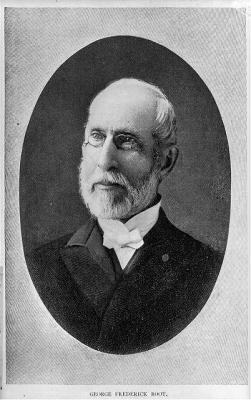 George Frederick Root (August 30, 1820 – August 6, 1895) was an American songwriter, who found particular fame during the American Civil War, with songs such as Tramp! Tramp! Tramp! and The Battle Cry of Freedom. He is regarded as the first American to compose a secular cantata.
George Frederick Root (August 30, 1820 – August 6, 1895) was an American songwriter, who found particular fame during the American Civil War, with songs such as Tramp! Tramp! Tramp! and The Battle Cry of Freedom. He is regarded as the first American to compose a secular cantata.
Root was born at Sheffield, Massachusetts, and was named after the German composer George Frideric Handel. Root left his farming community for Boston at 18, flute in hand, intending to join an orchestra. He worked for a while as a church organist in Boston, and from 1845 taught music at the New York Institute for the Blind, where he met Fanny Crosby, with whom he would compose fifty to sixty popular secular songs.
In 1850 he made a study tour of Europe, staying in Vienna, Paris, and London. He returned to teach music in Boston, Massachusetts as an associate of Lowell Mason, and later Bangor, Maine, where he was director of the Penobscot Musical Association and presided over their convention at Norumbega Hall in 1856.
From 1853-1855, Root helped Lowell Mason and William Bradbury establish the New York Normal Musical Institute, which served as a school for aspiring music educators. From 1855 on, Root would spend most of his summers traveling and teaching at music education conventions throughout New England. He applied a version of Pestalozzi’s teaching (although misunderstood by both Root and Mason) and was instrumental in developing mid- and late-19th century American musical education. He was a follower of the teachings of Emanuel Swedenborg.
On his return from Europe, Root began composing and publishing sentimental popular songs, a number of which achieved fame as sheet-music, including those with Fanny Crosby: The Hazel Dell, Rosalie the Prairie Flower, There’s Music in the Air and others, which were, according to Root’s New York Times obituary, known throughout the country in the antebellum period. Root chose to employ the pseudonym Wurzel (German for Root) to capitalize on the popularity of German composers during the 1850s, and to keep his identity as a serious composer against his composition of minstrel and popular songs.
Besides his popular songs, he also composed gospel songs in the Ira Sankey vein, and collected and edited volumes of choral music for singing schools, Sunday schools, church choirs and musical institutes. Root assisted William Bradbury in compiling The Shawm in 1853, a collection of hymn tunes and choral anthems, featuring the cantata Daniel: or the Captivity and Restoration. The cantata was a collaboration between Root and Bradbury musically, with text by Fanny Crosby and C.M. Cady.
He also composed various sacred and secular cantatas including the popular The Haymakers (1857). Root’s cantatas were popular on both sides of the Atlantic throughout the 19th century. His first cantata, The Flower Queen: or The Coronation of the Rose, was composed in 1851 with libretto by Fanny Crosby, and gained immediate success in singing schools across the United States. The Flower Queen has been regarded as the first secular cantata written by an American.
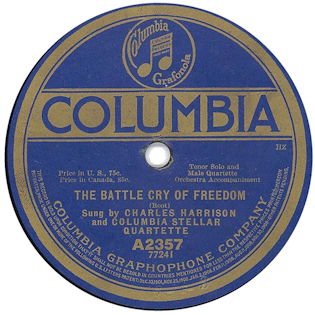 Building on his talent for song-writing, Root moved to Chicago, Illinois in 1859 to work for his brother’s music publishing house of Root & Cady. He became particularly successful during the American Civil War, as the composer of martial songs such as Tramp! Tramp! Tramp! (The Prisoner’s Hope), The Vacant Chair (with lyrics by Henry S. Washburn, about the death of John William Grout), Just before the Battle, Mother, and “The Battle Cry of Freedom”. He wrote the first song concerning the war, The First Gun is Fired, only two days after the conflict began with the bombardment of Fort Sumter. He ultimately had at least 35 war-time “hits”, in tone from the bellicose to the ethereal. His songs were played and sung at both the home front and the real front. Tramp, Tramp, Tramp became popular on troop marches, and “Battle Cry of Freedom” became well-known even in England.
Building on his talent for song-writing, Root moved to Chicago, Illinois in 1859 to work for his brother’s music publishing house of Root & Cady. He became particularly successful during the American Civil War, as the composer of martial songs such as Tramp! Tramp! Tramp! (The Prisoner’s Hope), The Vacant Chair (with lyrics by Henry S. Washburn, about the death of John William Grout), Just before the Battle, Mother, and “The Battle Cry of Freedom”. He wrote the first song concerning the war, The First Gun is Fired, only two days after the conflict began with the bombardment of Fort Sumter. He ultimately had at least 35 war-time “hits”, in tone from the bellicose to the ethereal. His songs were played and sung at both the home front and the real front. Tramp, Tramp, Tramp became popular on troop marches, and “Battle Cry of Freedom” became well-known even in England.
After the war, he was elected as a 3rd Class (honorary) Companion of the Military Order of the Loyal Legion of the United States. Root’s songs, particularly “The Battle Cry of Freedom”, were popular among Union soldiers during the war. According to Henry Stone, a Union war veteran recalling in the late 1880s: “A glee club came down from Chicago, bringing with them the new song, ‘We’ll rally ’round the flag, boys’, and it ran through the camp like wildfire. The effect was little short of miraculous. It put as much spirit and cheer into the army as a victory. Day and night one could hear it by every camp fire and in every tent. I never shall forget how the men rolled out the line, ‘And although he may be poor, he shall never be a slave.’ I do not know whether Mr. Root knows what good work his song did for us there, but I hope so”. — Henry Stone, 1887
Root was awarded the degree of Musical Doctor by the first University of Chicago in 1872. He died at his summer home in Bailey Island, Maine, at the age of 74.
Source: Wikipedia
Further references: PD Music – also see Wikipedia links
__________________________________________________________________
Ira David Sankey
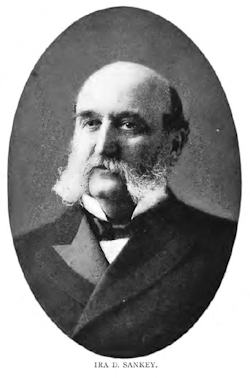 Ira David Sankey (28 August 1840 – 13 August 1908), known as The Sweet Singer of Methodism, was an American gospel singer and composer, associated with evangelist Dwight L. Moody. He was born on August 28, 1840, in Edinburg, Pennsylvania, just outside New Castle to David Sankey and Mary (née Leeper).
Ira David Sankey (28 August 1840 – 13 August 1908), known as The Sweet Singer of Methodism, was an American gospel singer and composer, associated with evangelist Dwight L. Moody. He was born on August 28, 1840, in Edinburg, Pennsylvania, just outside New Castle to David Sankey and Mary (née Leeper).
Aged 16, Sankey was converted at a revival meeting at the King’s Chapel (now a United Methodist Church), three miles away from his home. He served in the Civil War as a young man, later taking employment at the Internal Revenue Service, and also the YMCA. He married Fanny Victoria Edwards (1838–1910), one of his choir members, in September 1863; the couple had sons, John Sankey (1868–1912), and Ira Allan Sankey.
Sankey’s increasing fame as a Gospel singer eventually attracted the attention of noted evangelist Dwight L. Moody. They first met at a YMCA convention in Indianapolis, Indiana, in June, 1870. Several months later, Sankey attended his first evangelistic meeting with Moody. Shortly thereafter, Sankey resigned his government position.
In October 1871, Sankey and Moody were in the middle of a revival meeting when the Great Chicago Fire broke out. The two men barely escaped the conflagration with their lives. Sankey ended up watching the city burn from a rowboat far out on Lake Michigan. On June 7, 1872, Sankey and Moody made the first of several joint visits to the United Kingdom. Sankey’s hymns were promoted by London Baptist preacher, Charles Spurgeon, long afterwards. While in Edinburgh, they raised £10,000 at a fundraiser to build a new home for the Carrubbers Close Mission, and the foundation was laid during their time in Edinburgh. Today, the building remains one of the few on the Royal Mile still serving its original purpose.
When a local pastor asked Rev. Moody about the contribution that a gospel singer and song leader such as Ira Sankey brought to his meetings, Moody replied, “If we can only get people to have the words of the Love of God coming from their mouths it’s well on its way to residing in their hearts.”
Sankey wrote several hymns and songs, and composed and arranged music for many more. He collaborated with Philip Bliss and then later with James McGranahan and George Stebbins) on a series of “sacred song” collections published in the United States by Hubert Main through his Biglow & Main Co., and in the United Kingdom by Morgan & Scott, publishers also of his most enduring work, the popular Sacred Songs and Solos (widely known as “Sankey & Moody”) which eventually ran to over 1200 works and is still in use today. Sankey served as Biglow & Main’s president from 1895 to 1908. He also worked with one of the company’s most prolific hymnwriters, Fanny Crosby, who became his friend and music-making partner.
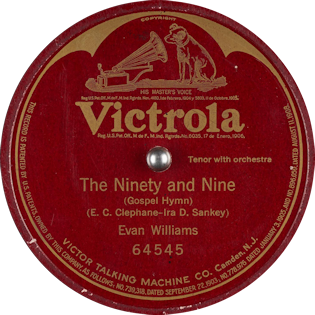 His first and most famous composition was ‘The Ninety and Nine’. Sankey and Moody were en route from Glasgow, Scotland to Edinburgh in May 1874, as they were to hold a three-day campaign there. This was at the urgent request of the Ministerial Association. Prior to boarding the train, Sankey bought a weekly newspaper for a penny. He found nothing of interest but a sermon by Henry Ward Beecher and some advertisements. Then, he found a little piece of poetry in a corner of one column that he liked, and he read it to Moody, but only received a polite reply. Sankey clipped the poem and tucked it in his pocket. At the noon day service of the second day of the special series, Moody preached on The Good Shepherd and asked Sankey if he had a final song. An inner voice prodded him, although there was no music to the poem, so he acquiesced. He placed the little piece of newspaper he had tucked in his pocket on the organ in front of him. Half speaking and half singing, he completed the first stanza, which was followed by four more. Moody walked over with tears in his eyes and said, “Where did you get that hymn?” The Ninety and Nine became his most famous tune and his most famous sale from that time on. The words were written by Elizabeth Clephane in 1868; she died the following year.
His first and most famous composition was ‘The Ninety and Nine’. Sankey and Moody were en route from Glasgow, Scotland to Edinburgh in May 1874, as they were to hold a three-day campaign there. This was at the urgent request of the Ministerial Association. Prior to boarding the train, Sankey bought a weekly newspaper for a penny. He found nothing of interest but a sermon by Henry Ward Beecher and some advertisements. Then, he found a little piece of poetry in a corner of one column that he liked, and he read it to Moody, but only received a polite reply. Sankey clipped the poem and tucked it in his pocket. At the noon day service of the second day of the special series, Moody preached on The Good Shepherd and asked Sankey if he had a final song. An inner voice prodded him, although there was no music to the poem, so he acquiesced. He placed the little piece of newspaper he had tucked in his pocket on the organ in front of him. Half speaking and half singing, he completed the first stanza, which was followed by four more. Moody walked over with tears in his eyes and said, “Where did you get that hymn?” The Ninety and Nine became his most famous tune and his most famous sale from that time on. The words were written by Elizabeth Clephane in 1868; she died the following year.
Glaucoma blinded Sankey during the last five years of his life, so Fanny Crosby, blind since childhood, may have also been a kindred spirit. Sankey died on August 13, 1908, at his home in Brooklyn, New York. He was buried at Green-Wood Cemetery in Brooklyn. His wife died in 1910 and their son John in 1912. It was not until 1923, upon discovery of a bank account in his name, that his will was probated, 15 years after his death.
In 1979–80, the Gospel Music Association recognized Sankey’s prodigious contributions to gospel music by listing him in the Gospel Music Hall of Fame.
Source: Wikipedia (text), ‘Biography of Gospel Song and Hymn Writers’ (photo)
Further references :
__________________________________________________________________
William Henry Sherwood
 An evangelist and composer (active 1880s – 1890s) who rarely left his Petersburg, Virginia home. He led local choirs and bands and derved as superintendent of Sherwood’s Orphan School, an orphanage for black children. In 1891, he published Soothing Songs Hymnal, followed two years later by Harp of Zion. The latter features gospel songs and spirituals by Sherwood and other authors. This hymnal made him the first African American to publish songs in the Negro sapiritual, pre-gospel style. His harmonic, melodic, and rhythmic structure were all precursors of the music that later came to be called gospel. Sherwoods’ Harp of Zion was released in 1893 with a few changes as Baptist Young People’s Union National Harp of Zion as their hymnal. Sherwoods’ lyrics are relatively sparse and make frequent use of call and response; the melodies are simple an d catchy. These features make the songs easy to remember. The National Baptist Convention Publishing Board liked Sherwood’s “lively arrangements” and recognised their power; for these reasons, they adopted Harp of Zion as their own hymnal. This indicates that even the more traditional African American Baptisst churches were in the early stages of recognising the power of “the new wave of what were now being termed ‘gospel songs'”.
An evangelist and composer (active 1880s – 1890s) who rarely left his Petersburg, Virginia home. He led local choirs and bands and derved as superintendent of Sherwood’s Orphan School, an orphanage for black children. In 1891, he published Soothing Songs Hymnal, followed two years later by Harp of Zion. The latter features gospel songs and spirituals by Sherwood and other authors. This hymnal made him the first African American to publish songs in the Negro sapiritual, pre-gospel style. His harmonic, melodic, and rhythmic structure were all precursors of the music that later came to be called gospel. Sherwoods’ Harp of Zion was released in 1893 with a few changes as Baptist Young People’s Union National Harp of Zion as their hymnal. Sherwoods’ lyrics are relatively sparse and make frequent use of call and response; the melodies are simple an d catchy. These features make the songs easy to remember. The National Baptist Convention Publishing Board liked Sherwood’s “lively arrangements” and recognised their power; for these reasons, they adopted Harp of Zion as their own hymnal. This indicates that even the more traditional African American Baptisst churches were in the early stages of recognising the power of “the new wave of what were now being termed ‘gospel songs'”.
Sources: ‘Encyclopedia of Gospel Music’ and ‘People Get Ready!: A New History of Black Gospel Music’.
__________________________________________________________________
Charles Albert Tindley
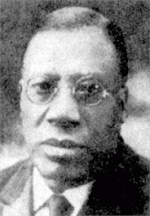 Rev. Dr. Charles Albert Tindley (July 7, 1851 – July 26, 1933) was an American Methodist minister and gospel music composer.
Rev. Dr. Charles Albert Tindley (July 7, 1851 – July 26, 1933) was an American Methodist minister and gospel music composer.
Often referred to as “The Prince of Preachers”, he educated himself, became a minister and founded one of the largest Methodist congregations serving the African-American community on the East Coast of the United States.
Tindley’s father was a slave, but his mother was free. Tindley himself was thus considered to be free, but even so he grew up among slaves. After the Civil War, he moved to Philadelphia, where he found employment as a hod carrier (brick carrier). He and his wife Daisy attended the Bainbridge St. Methodist Episcopal Church. Charles later became the sexton, a job with no salary.
Never able to go to school, Tindley learned independently and by asking people to tutor him. He enlisted the help of a Philadelphia synagogue on North Broad St. to learn Hebrew and learned Greek by taking a correspondence course through the Boston Theological School.* Without any degree, Tindley was qualified for ordination in the Methodist Episcopal Church by examination, with high ranking scores. He was ordained as a Deacon in the Delaware Conference in 1887 and as an elder in 1889. As was the practice of the ME church, Tindley was assigned by his bishop to serve as an itinerant pastor staying a relatively short time at each charge: 1885 to Cape May, New Jersey, 1887 to South Wilmington, Delaware, 1889 to Odessa, Delaware. 1891 to Pocomoke, Maryland, 1894 to Fairmount, Maryland, and 1897 to Wilimington Delaware at Ezion Methodist Church. In 1900 he became the Presiding Elder of the Wilmington District.
Tindley then became the pastor of the same church at which he had been a janitor. Under his leadership, the church grew rapidly from the 130 members it had when he arrived. In 1906 the congregation moved from Bainbridge St. to Broad and Fitzwater Sts. and was renamed East Calvary Methodist Episcopal Church. The property was purchased from the Westminster Presbyterian church and seated 900, though it was soon filled to overflowing. The congregation over time grew to a multiracial congregation of 10,000. After his death, the church was renamed “Tindley Temple.” The Tindley Temple United Methodist Church was added to the National Register of Historic Places in 2011.
Tindley was acquainted with politicians and business leaders in Philadelphia, including John Wanamaker. He worked with business leaders to assist his members in finding jobs. He also encouraged members to start their own businesses and purchase homes. The church formed the East Calvary Building and Loan Association to offer mortgages. Tindley also solicited donations from businessmen of food for the congregation’s ministry of feeding the needy.
Tindley objected to social events that he considered degrading, including the 1912 Cake Walk and Ball, and The Soap Box Minstrels show at the Academy of Music on Broad and Locust Streets. In 1915, Tindley and other leaders, including Rev. Wesley Graham, led protesters in a march to the Forrest Theater to protest against the showing of D. W. Griffith’s film The Birth of a Nation. They were attacked by whites with clubs, sticks, and bottles. Graham was hospitalized; Tindley’s injuries were treated at home.
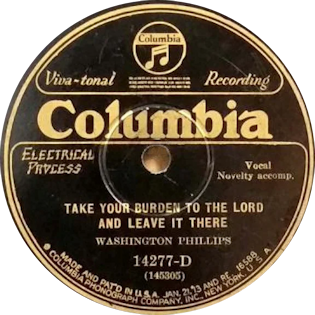 Tindley was given a Doctor of Divinity Degree by Bennett College and Morgan College in Baltimore Md.
Tindley was given a Doctor of Divinity Degree by Bennett College and Morgan College in Baltimore Md.
Tindley was a noted songwriter and composer of gospel hymns and is recognized as one of the founding fathers of American gospel music. Five of his hymns appear in the 1989 United Methodist Hymnal. His composition “I’ll Overcome Someday” is credited by some observers to be the basis for the U.S. Civil Rights anthem “We Shall Overcome,”. Another of his notable hymns is “(Take Your Burden to the Lord and) Leave It There” (1916), which has been included in several hymnals and has been recorded by numerous artists in a variety of styles. Others are “Stand by Me” (1905) and “What Are They Doing in Heaven?” (1901).
Tindley published his songs beginning in 1901, and published several hymn collections, including Soul Echoes in 1905 (enlarged edition “No. 2”, 1909) and a series beginning with New Songs Of Paradise! in 1916. A posthumous New Songs of Paradise, No. 6 in 1941 was the first collection to bring together all 46 of Tindley’s published hymns, though in some cases stanzas that had previously been published were left out. Beams of Heaven: Hymns of Charles Albert Tindley (1851-1933) (2006) restores the full original complement of verses.
Source: Wikipedia
__________________________________________________________________
John Wesley Work Jr. (aka John Wesley Work II)
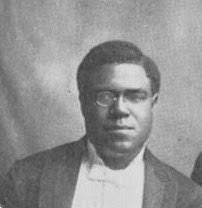 John Wesley Work Jr. (August 6, 1871 – September 7, 1925) was the first African-American collector of folk songs and spirituals, and also a choral director, educationalist and songwriter. He is now sometimes known as John Wesley Work II, to distinguish him from his son, John Wesley Work III (see below).
John Wesley Work Jr. (August 6, 1871 – September 7, 1925) was the first African-American collector of folk songs and spirituals, and also a choral director, educationalist and songwriter. He is now sometimes known as John Wesley Work II, to distinguish him from his son, John Wesley Work III (see below).
Work was born in Nashville, Tennessee, the son of Samuella and John Wesley Work, who was director of a church choir, some of whose members were also in the original Fisk Jubilee Singers. John Wesley Work Jr. attended Fisk University, where he organised singing groups and studied Latin and history, graduating in 1895. He also studied at Harvard University. Work then taught in Tullahoma, Tennessee and worked in the library at Fisk University, before taking an appointment as a Latin and history instructor at Fisk in 1904.
With his wife and his brother, Frederick Jerome Work, Work began collecting slave songs and spirituals, publishing them as New Jubilee Songs as Sung by the Fisk Jubilee Singers (1901) and New Jubilee Songs and Folk Songs of the American Negro (1907). The latter book included the first publication of “Go Tell It on the Mountain”, which he may have had a hand in composing. His other songs included “Song of the Warrior”, “If Only You Were Here”, “Negro Lullaby”, and “Negro Love Song”. He also established the music publishing company, Work Brothers and Hart.
As the director of the Fisk Jubilee Singers, he was responsible for taking them on tour each year. However, because of negative feelings toward black folk music at Fisk, he was forced to resign his post there in 1923. He then served as president of Roger Williams University in Nashville, until his death in 1925.
Work married Agnes Haynes in 1899. They had six children, of whom John Wesley Work III (1901–67) also worked as the director of the Fisk Jubilee Singers and as a song collector and composer. Work died on September 7, 1925.
Source: Wikipedia
__________________________________________________________________
John Wesley Work III
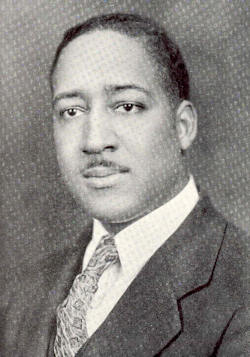 John Wesley Work III (July 15, 1901 – May 17, 1967) was a composer, educator, choral director, musicologist and scholar of African-American folklore and music.
John Wesley Work III (July 15, 1901 – May 17, 1967) was a composer, educator, choral director, musicologist and scholar of African-American folklore and music.
He was born on July 15, 1901, in Tullahoma, Tennessee, to a family of professional musicians. His grandfather, John Wesley Work, was a church choir director in Nashville, where he wrote and arranged music for his choirs. Some of his choristers were members of the original Fisk Jubilee Singers. His father, John Wesley Work, Jr., was a singer, folksong collector and professor of music, Latin, and history at Fisk, and his mother, Agnes Haynes Work, was a singer who helped train the Fisk group. His uncle, Frederick Jerome Work, also collected and arranged folksongs, and his brother, Julian, became a professional musician and composer.
Work began his musical training at the Fisk University Laboratory School, moving on to the Fisk High School and then the university, where he received a B.A. degree in 1923. After graduation, he attended the Institute of Musical Art in New York City (now the Juilliard School of Music), where he studied with Gardner Lamson. He returned to Fisk and began teaching in 1927, spending summers in New York studying with Howard Talley and Samuel Gardner. In 1930 he received an M.A. degree from Columbia University with his thesis American Negro Songs and Spirituals. He was awarded two Julius Rosenwald Foundation Fellowships for the years 1931 to 1933 and, using these to take two years leave from Fisk, he obtained a B.Mus. degree from Yale University in 1933.
Work spent the remainder of his career at Fisk, until his retirement in 1966. He served in a variety of positions, notably as a teacher, chairman of the Fisk University Department of Music, and director of the Fisk Jubilee Singers from 1947 until 1956. He published articles in professional journals and dictionaries over a span of more than thirty years. His best known articles were “Plantation Meistersingers” in The Musical Quarterly (Jan. 1940), and “Changing Patterns in Negro Folksongs” in the Journal of American Folklore (Oct. 1940). In 1953, he was a member of the charter class of the Zeta Rho chapter of Phi Mu Alpha Sinfonia fraternity, the national fraternity for men in music. The Fisk chapter was the third chapter of the Fraternity chartered at a historically black college or university, the first being chartered at Howard University in 1952.
Work began composing while still in high school and continued throughout his career, completing over one hundred compositions in a variety of musical forms—for full orchestra, piano, chamber ensemble, violin and organ—but his largest output was in choral and solo-voice music. He was awarded first prize in the 1946 competition of the Federation of American Composers for his cantata The Singers, and in 1947 he received an award from the National Association of Negro Musicians. In 1963 he was awarded an honorary doctorate from Fisk University.
Following Work’s collection Negro Folk Songs, the bulk of which was recorded at Fort Valley, he and two colleagues from Fisk University, Charles S. Johnson, head of the department of sociology (later, in October 1946, chosen as the university’s first black president), and Lewis Jones, professor of sociology, collaborated with the Archive of American Folk Song on the Library of Congress/Fisk University Mississippi Delta Collection (AFC 1941/002). This project was a two-year joint field study conducted by the Library of Congress and Fisk University during the summers of 1941 and 1942. The goal of the partnership was to carry out an intensive field study documenting the folk culture of a specific community of African Americans in the Mississippi Delta region. The rapidly urbanizing commercial area of Coahoma County, Mississippi, with its county seat in Clarksdale, became the geographical focus of the study. Some of the correspondence included in this collection between Work and Alan Lomax, then head of the Archive of American Folk Song, touches on both the Fort Valley and the emerging Fisk University recording projects.
John Wesley Work III died on May 17, 1967.
Source: Wikipedia
__________________________________________________________________
